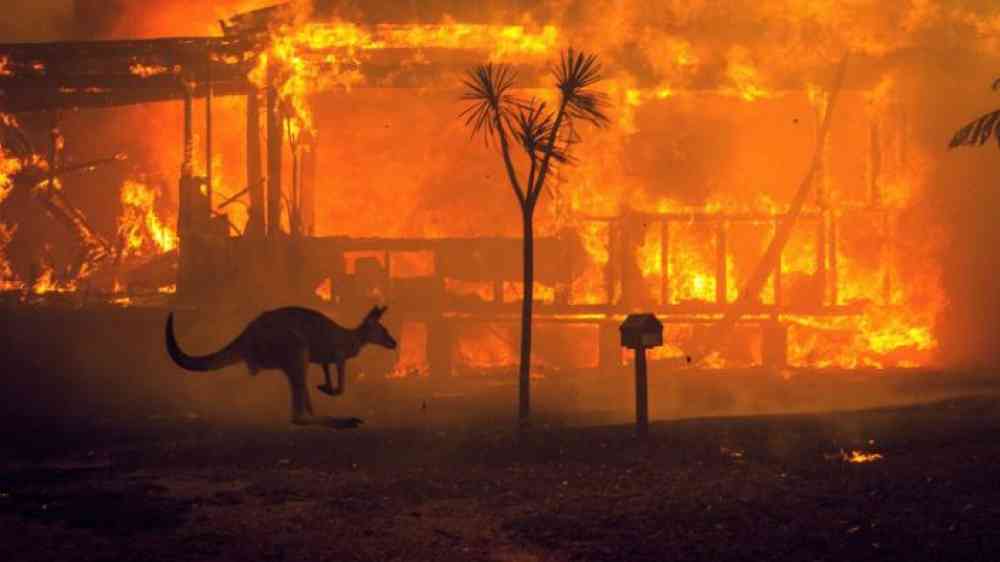
Science is shaping how Australia can better prepare for devastating bushfire seasons with the release of comprehensive research based on the major issues of the 2019-20 Black Summer fire season.
The wide-ranging Black Summer research program was undertaken by Natural Hazards Research Australia and the Bushfire and Natural Hazards Cooperative Research Centre in the years since the 2019-20 fire season, with funding from the Australian Government and partners. The program drew on the expertise of Australia’s best fire and climate scientists, human geographers, land managers and public health and recovery experts at 28 research institutions, First Nations organisations and fire and land management agencies.
A new report – Understanding the Black Summer bushfires through research – summarises the research findings from 23 projects. The report presents an integrated view of the way forward from the fires, including exploring why the 2019-20 fire season was so devastating, what new capabilities can be implemented and how Australia can best learn from its worst fire season on record. Some projects focused on what could be learned at a national level, while others analysed specific fire behaviour or technology in Queensland, New South Wales, Victoria, South Australia and Western Australia.
Insights from the research provide Natural Hazards Research Australia partners in government, fire and emergency management agencies and community organisations with an up-to-date scientific basis for decisions on how best to allocate resources, manage the environment and help communities prepare, respond and recover.
Andrew Gissing, CEO of Natural Hazards Research Australia, said the research was based on the issues of the 2019-20 fire season, but the findings can be applied to bushfire management, safety and community resilience for all natural hazards around Australia.
“This is vital new Australian science about how to keep our landscapes and people safe from bushfire. Our fire seasons are getting longer and dangerous bushfire days are becoming more frequent. We need to be smarter and use this new scientific knowledge and research to improve the ways we live with fire,” Mr Gissing said.
“The 2019-20 bushfires were long and challenging. This research has improved our understanding of how the extremely dry conditions and record-breaking temperatures impacted our weather in ways that previously were not as well-understood.
“This research will guide how bushfire risk can best be managed through better science, policy and practices. The strength of the science was its multi-disciplinary approach that will lead to action – better bushfire modelling, better warnings, better land management including enabling cultural fire and better recovery after a disaster for those affected will come from this research.”
Insights from the research
The following insights can be gained from the Black Summer research program, as summarised in the new Understanding the Black Summer bushfires through research report.
Fire predictive services and fire management
Fire prediction research focused on the complex interactions between bushfires and the atmosphere, fuel and soil moisture. The science provides better knowledge of how soil and vegetation moisture affect fire risk at local levels, as well as the intricacies of bushfire and atmosphere interaction. Understanding these trends will help improve fire danger predictions and community warnings for specific areas. The research provides new insights into how different vegetation reduces windspeed. This will lead to improvements in bushfire behaviour modelling, warnings to those in the path of bushfires and better evaluation of aerial firefighting drops.
Training is now in development for fire behaviour analysts and fire meteorologists to better recognise the factors that increase fire risk, both in the atmosphere and in the landscape over scales of days, weeks, months and years. Insights were also gained into how complex fire prediction information can be better tailored to community needs.
The research also showed that there is no one-size-fits-all approach for prescribed burning and that local conditions and variations matter. The type of landscape, vegetation, time since prescribed burn, type of prescribed burn and the weather conditions on the day of the bushfire are all significant factors. This new knowledge will help fire and land management agencies measure the impacts of future prescribed burns.
Cultural land management
This research approached First Nations cultural land management as an essential part of creating well-prepared and resilient communities and landscapes across the country. The studies developed foundations, recommendations and modelling for future First Nations-led and co-designed research programs that enable and empower cultural fire and land management practices across Australia. This research is being extended to build on the successful practices from northern Australia to empower and enable cultural fire and land management in south-east Australia to improve relationships between First Nations communities and emergency agencies, ultimately leading to healthier country and reduced bushfire risk.
Community-centred disaster risk reduction
This research focused on understanding and assisting communities and governments in enabling effective and efficient community participation and leadership in disaster preparation, relief and recovery. This included research that investigated community attitudes and experiences of the 2019-20 bushfire season in New South Wales, looking at how people were affected by the bushfire and what actions they took. Findings highlighted the complexities of community preparedness and responses to bushfire, and the need for integrated and holistic responses to risk reduction across governments, fire and emergency services, businesses and communities at risk.
Research also explored how local communities can lead their own recovery with better support from governments and other agencies. The findings show that a flexible approach – in which government and recovery organisations are led by community needs – is key for successful recovery.
Bushfire data and reconstruction
Projects across Queensland, New South Wales, Victoria, South Australia and Western Australia addressed interrelated bushfire reconstruction gaps, including wind, extreme fire, satellite observations, prescribed burning and risk modelling. Each project looked at a specific element of the 2019-20 bushfires in detail to understand what additional knowledge, technology or tools could be used to understand fire risk and fire behaviour specific to different geographical areas and vegetation types.